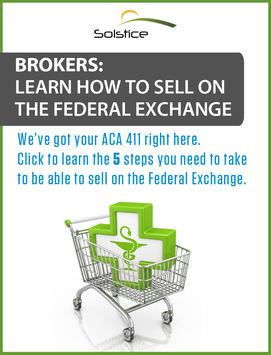By Kate Ranta on Jan 24, 2014 3:37:00 PM
What is the Affordable Care Act's impact on cost sharing between employers and employees? The ACA establishes limits on how much a family can pay out-of-pocket for this Essential Health Benefit (EHB).
Understanding key aspects of cost sharing--and being able to explain them to your clients--makes you a valuable health reform resource.
Your clients may not be 100 percent sure how to approach the required pediatric dental coverage, and how cost sharing will play out in this new health care environment. By doing your homework, you'll be able to guide them in the right direction.
To understand possible cost sharing scenarios relating to dental benefits, it is important to first look at the basic foundation of Essential Health Benefits (EHB), which includes pediatric dental coverage. The U.S. Department of Health and Human Services (HHS) rules require states to pick a medical benchmark that includes 10 categories of required EHB coverage. When dental benefits are missing from the chosen benchmark, states must use either the Children’s Health Insurance Program (CHIP) or Federal Employees Dental and Vision Insurance Program (FEDVIP) to fill the scope of coverage.
FEDVIP is a DPPO with typical broad scope dental coverage of 100/70/50 in network and 90/60/40 out of network cost-sharing. There is a $50 deductible on non-preventive services and a 24-month waiting period on child-only orthodontic coverage. CHIP is state health insurance available to children up to age 19 for families with income up to $44,100. CHIP covers dental services. It generally excludes implants and is limited to medically necessary orthodontic coverage. More details are available at www.InsureKidsNow.gov.
Consumer Cost Sharing
Brokers will be called upon to explain two key areas of consumer cost-sharing scenarios as they relate to dental benefits: pediatric dental coverage embedded within a medical plan and stand-alone dental in the Health Insurance Exchange (HIX) or the outside exchange market. Following are key highlights for each.
Pediatric Dental Coverage Embedded with Medical Plans
Cost-sharing parameters for pediatric coverage embedded within medical plans include:
- No annual or lifetime maximums
- Part of overall Actuarial Value (AV) for metal levels: 60, 70, 80, 90 (plus/minus 2 percent)
- Can be subject to medical deductibles not to exceed $2,000 for individuals and $6,000 family or have separate deductible.
- Subject to consumer out-of-pocket (OOP) annual limits are $6,800 for individuals and $12,500 for family.
Stand-alone pediatric dental in the Exchange
- No annual or lifetime maximums
- AV levels of high/low options: 70 plus/minus 2 percent or 85 plus/minus two percent
- “Reasonable” separate consumer OOP annual limit as determined by each state (State exchanges run by the federal administrator will use $700 as the “reasonable” limit for the 2014.)
And... another free resource for you! Click below!
Any questions about your current Solstice products? Login to your portal on https://www.solsticemarketplace.com/
Want to start selling Solstice? Give us a call at 877-760-2247 or email us at sales@solsticebenefits.com





comments